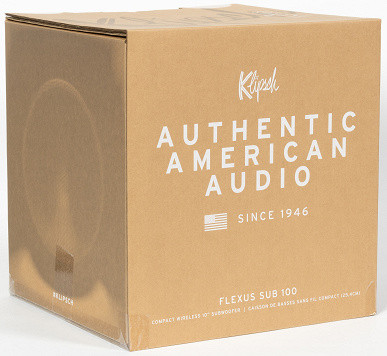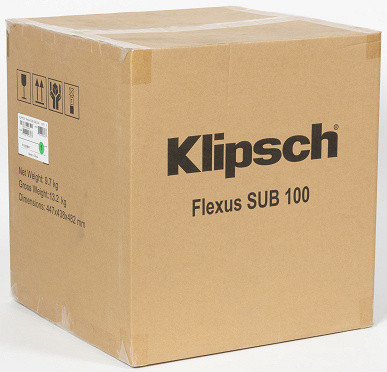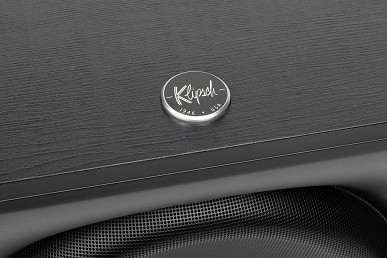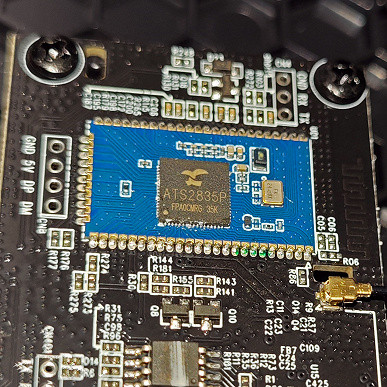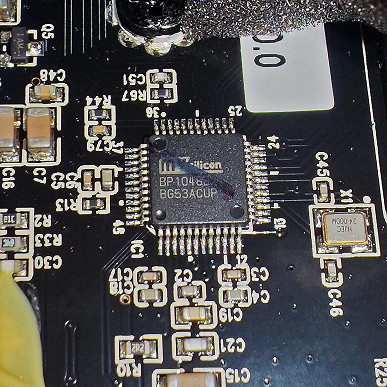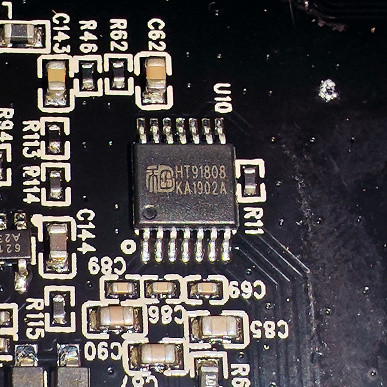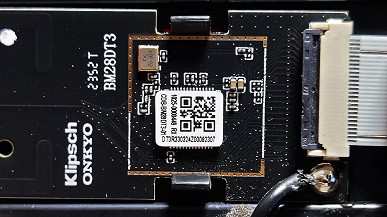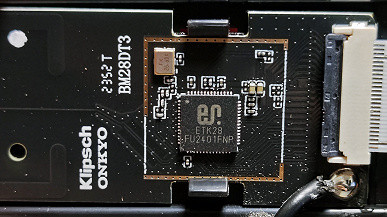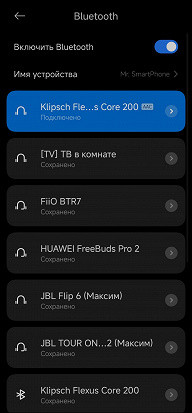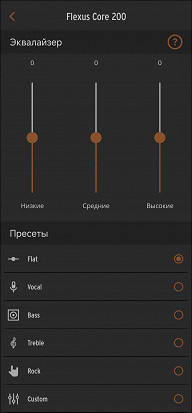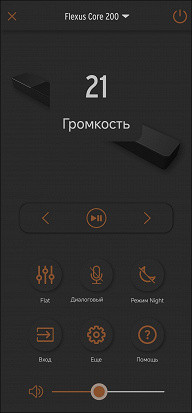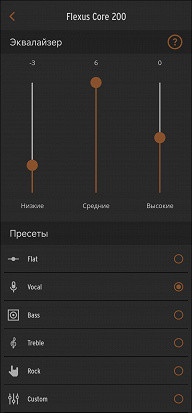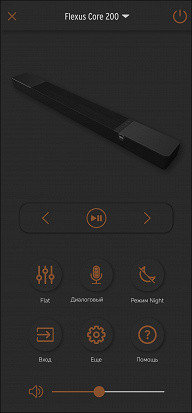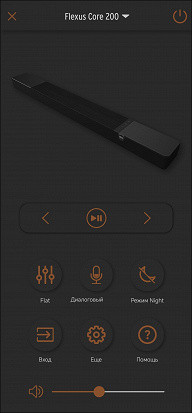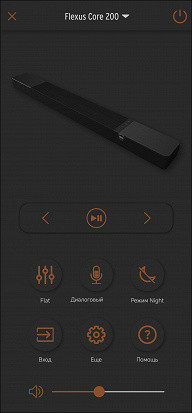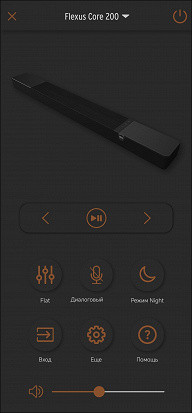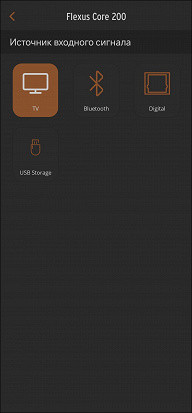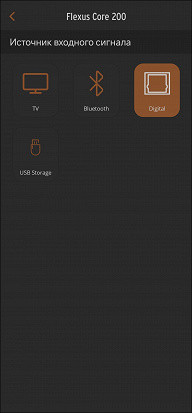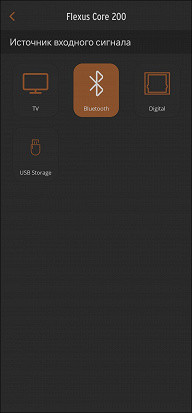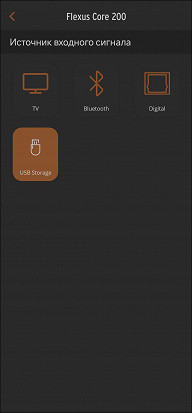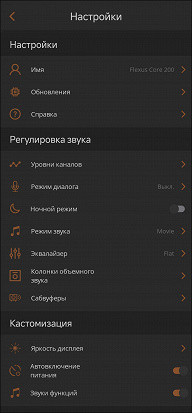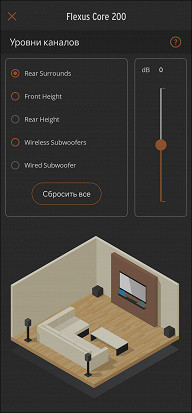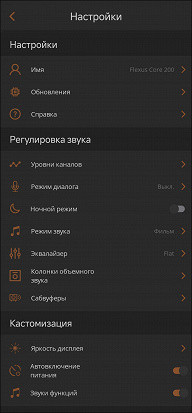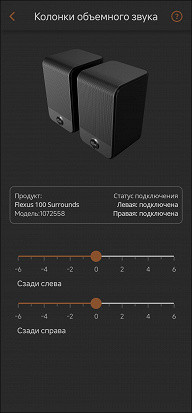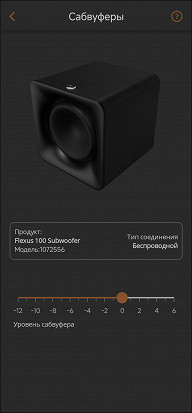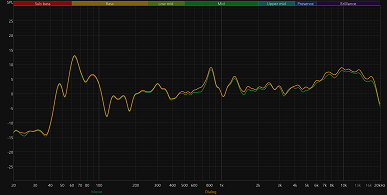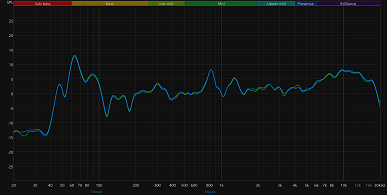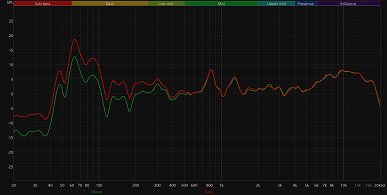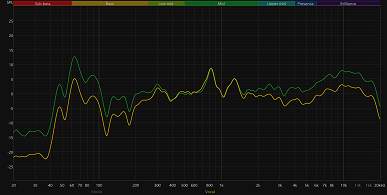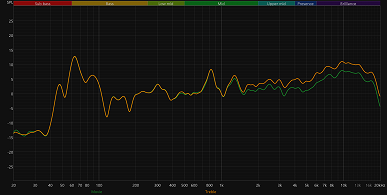Two reputable audio brands, Klipsch and Onkyo, have joined forces to create a new line of audio devices called Flexus, which includes soundbars, rear speakers and a subwoofer. This collaboration between the American and Japanese companies is no coincidence, because both are associated with Premium Audio Company (PAC), a subsidiary of Voxx International, which also owns brands such as Jamo, Magnat, Mac Audio, Teac and Pioneer.
When testing soundbars, the question invariably arises: can a compact device replace a full-fledged home audio system? Of course not. A full home theater with several speakers will always provide better sound. However, not every user has the opportunity or desire to install such a system at home. In this case, soundbars become an excellent alternative, offering improved sound when watching movies and TV shows compared to the built-in TV speakers. How significant this improvement will be is an individual question.

Flexus Core 100 (top) and Core 200 (bottom)
The alliance between Klipsch and Onkyo is encouraging, as both companies have repeatedly proven their skills in creating high-quality audio equipment. The Flexus line probably got its name due to the “flexibility” in the choice of devices and the ease of “building up” the system (from the English flex — to bend, flexible — flexible). The series includes four devices:
Klipsch Flexus Core 100 is a basic soundbar just over 70 cm wide that plays sound in 2.1 format. It is equipped with two front speakers with a diameter of 2.25 inches with an aluminum cone and two speakers with a diameter of 4 inches for low frequencies. HDMI eARC, digital optical input, USB-C and Bluetooth are provided for connection. Dolby decoding is supported, including Dolby Atmos, but DTS is missing. The device can be controlled using the buttons on the body, the remote control or the Klipsch Connect Plus app for iOS and Android. The cost at the time of testing was about $ 525.
Klipsch Flexus Core 200 is a more advanced version of the soundbar with support for 3.1.2 audio format. It is equipped with nine speakers and is almost 112 cm wide. The connectivity options and supported formats are the same as the junior model. The cost at the time of testing is about $ 647.
Klipsch Flexus Surr 100 are wireless rear speakers with 3-inch full-range speakers that can be used with any soundbar in the series. Rear sound is a weak point of most soundbars, even expensive ones, but Flexus offers a simple and effective solution to this problem. The cost at the time of testing is about $ 404.
Klipsch Flexus Sub 100 is a wireless subwoofer with easy connection setup. This device is suitable for those who want to get more powerful and spectacular low frequencies, significantly expanding the capabilities of the system. The cost at the time of testing is about $ 462.

To get acquainted with the system, we chose the more promising in terms of sound Klipsch Flexus Core 200, supplementing it with a subwoofer Klipsch Flexus Sub 100 to create a full-fledged sound environment. We will not consider the rear speakers in detail, since their main requirements come down to the convenience of placement and connection. Nevertheless, we will mention them in our review.
Technical specifications
| Soundbar Klipsch Flexus Core 200 | |
|---|---|
| Frequency range | 43 Hz — 20 kHz |
| Front speakers |
|
| Upward-firing speakers |
|
| Power | 185W RMS |
| Control | control panel on the device, remote control, software |
| Interfaces | HDMI (eARC), Bluetooth, USB-C, S/PDIF (optical) |
| Codecs | SBC, AAC |
| Supported formats | PCM, LPCM, Dolby Digital, Dolby Digital Plus, Dolby True HD, Dolby Atmos |
| Connecting a subwoofer | wired (RCA), wireless |
| Dimensions | 1118×78×126 mm |
| Weight | 8.5 kg |
| Subwoofer Klipsch Flexus Sub 100 | |
| Speaker | 1×10″ (25.4 cm) |
| Power | 80 W |
| Connecting to the source | Wired (RCA), wireless |
| Dimensions | 350×335×340 mm |
| Weight | 14 kg |
Packaging and assembly
The soundbar was delivered in two boxes. The outer box, made of simple unpainted cardboard, is intended for protection during transportation and is designed minimalistically: the name of the device and some service information. The inner box looks more attractive — with high-quality cardboard, a large number of inscriptions and a more interesting design.


The situation with the subwoofer is similar, but the boxes are noticeably larger. Inside, all the devices are neatly packed and protected with foam, and also placed in plastic bags for additional protection. This guarantees their safety during transportation.
The Klipsch Flexus Core 200 comes with the soundbar itself, wall brackets, instructions, a remote control with batteries, and a 1.5-meter HDMI cable. The manufacturer also added three power cable options suitable for different socket standards.

The cardboard tray that the soundbar sits in inside the package also serves as a template for marking the holes needed to attach the brackets.
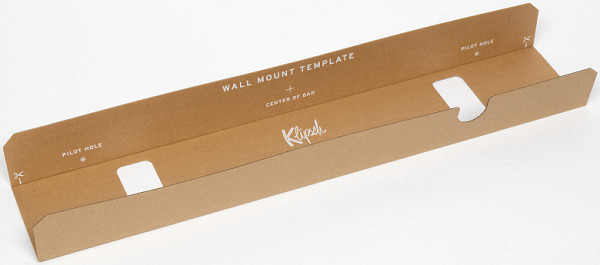
We will talk about the remote control below; it is powered by two AAA batteries, which are included in the kit.
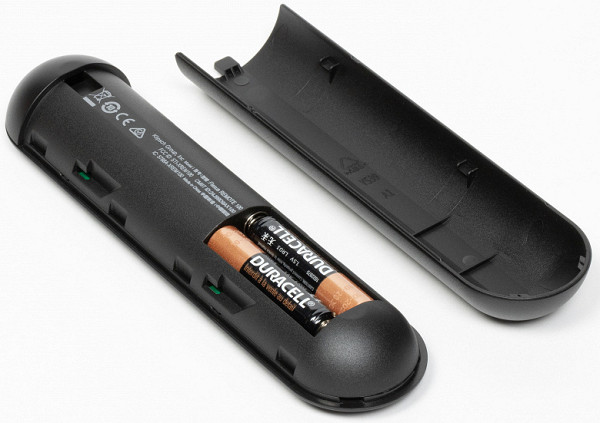
The subwoofer also comes with three power cables, instructions, and a wireless adapter with a USB-A connector.
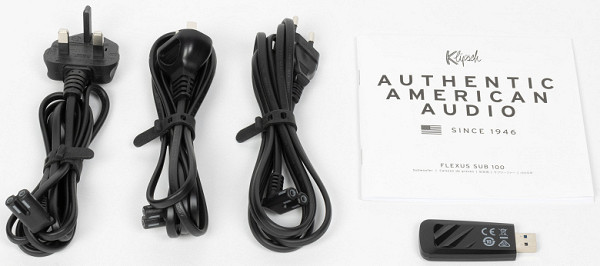
Design
The Klipsch Flexus Core 200 is stylishly and discreetly designed, allowing it to easily fit into any interior without attracting unnecessary attention — which is what users usually expect from a soundbar. The top panel is made of plastic with a wood texture, and on the sides there are metal grilles that hide the speakers that create surround sound.

The soundbar is covered with sound-transparent fabric along the entire perimeter, hiding the front speakers on the front panel. All surfaces of the device are resistant to dirt and are easy to clean if necessary.

Closer to the upper right corner is the only decorative element — the Klipsch logo. On the top panel next to it is a small touch control panel.
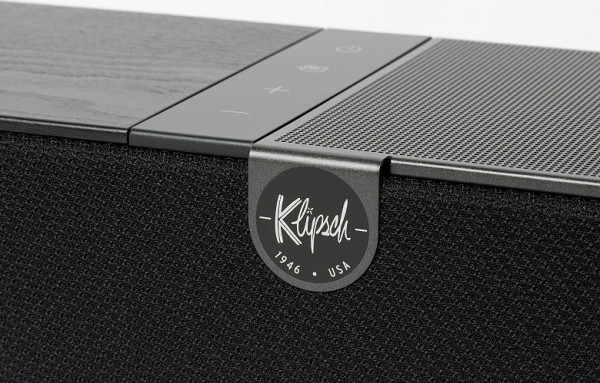
Behind the fabric there is a screen with five matrix indicators, the brightness of which can be adjusted within limits sufficient for comfortable use of the device in different lighting conditions.

The screen displays basic information about the device's operation, including volume level, active input, and sound modes. However, information about the decoded audio format and the track being played from the USB drive is not shown.
The recess on the back of the Klipsch Flexus Core 200 contains the connection ports, as well as a button for wireless pairing with other parts of the audio system.

On the bottom of the soundbar are fasteners, threaded inserts for the screws of the included brackets, connector markings, and rubber feet.

The soundbar's feet have a relatively large area and low height, which ensures stable placement on a horizontal surface and partial absorption of unwanted vibrations during operation of the device.
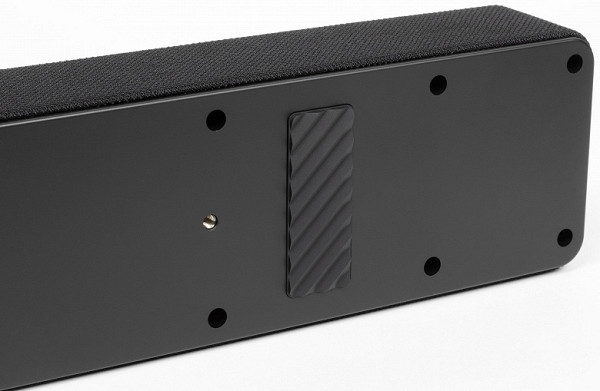
The subwoofer is predictably made in the same style as other speakers in the Flexus family, and has average dimensions for devices of this type — 350x335x340 mm.
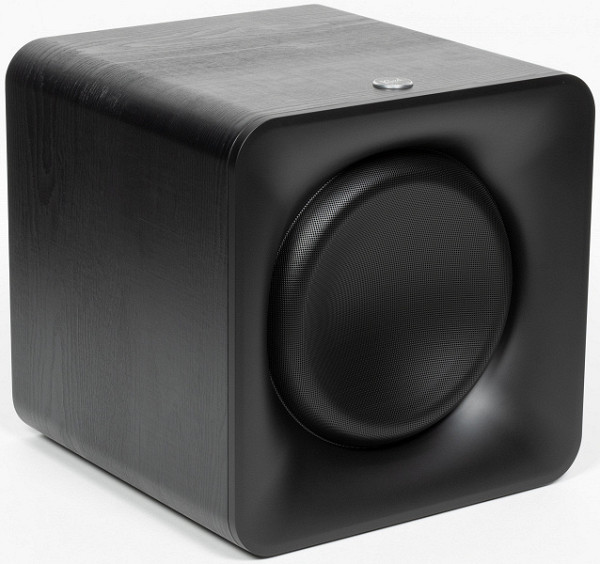
On the top wall there is a raised logo that is slightly illuminated, signaling that the device is on. The backlight does not turn off and can be slightly annoying in a dark room.
The rear panel contains connectors for connection, and around it there are “legs” that will help organize excess cable length if necessary.

The subwoofer is made as a «closed box» without a phase inverter. The speaker with a diameter of just over 25 cm is located on the front panel and is inside the horn. A non-removable metal mesh is provided to protect the emitter.
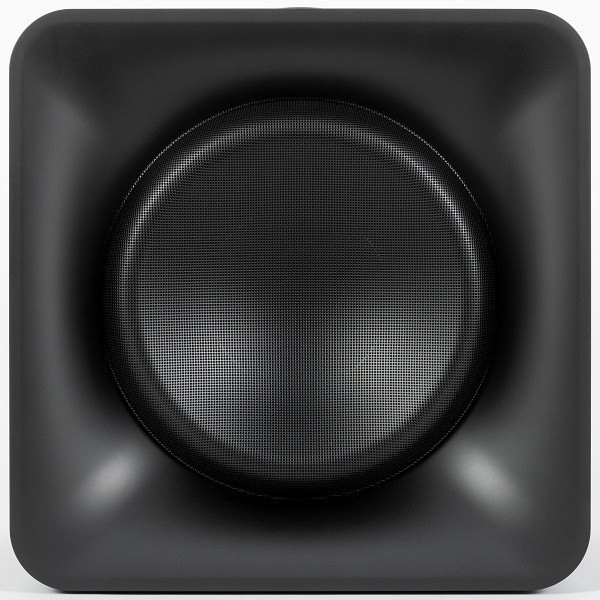
The outer sides of the MDF case are covered with black vinyl film with a wood grain texture. It is resistant to dirt and easy to clean.
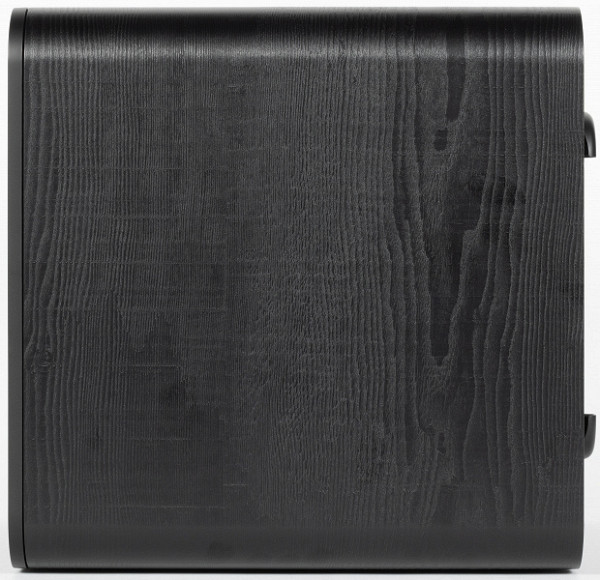
The feet are again rubber and relatively small — the vibration level here will clearly be higher than with a soundbar, so it would be nice to see something more solid.

Construction
The Flexus Core 200 case consists of two parts, which are fastened with many screws, but are easily separated if necessary. The developers emphasize the «tightness» of the case, which helps improve the positioning of the sound. To ensure tightness, a rubber seal is installed around the perimeter. The power supply, amplifier and control board are placed on separate boards located in different parts of the case.

The photo above shows the mounting locations of all the speakers, and the diagram below shows their purpose and size.
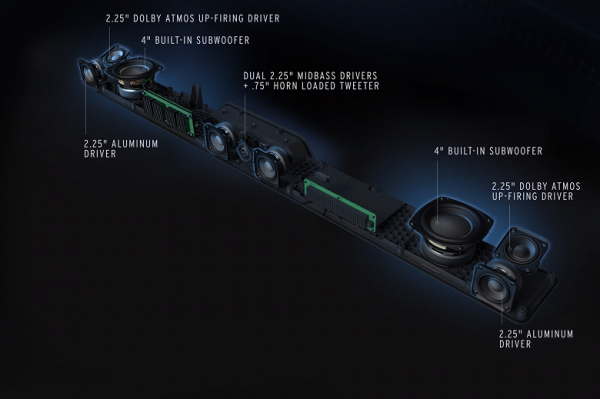
The power supply is not shielded, but is placed separately from other parts of the device and is as far away from the amplifier as possible. It probably comes in a set from the reputable Chinese manufacturer Dongsong Electronic. All potentially vulnerable areas of the power supply are protected by compound, while on other boards there is practically none.

The amplifier board is attached to the left side of the front wall of the case. There are no questions about the build quality, everything is done as expected well.

The amplification is built on four class D amplifiers with digital input Acme ACM8625, each of which is capable of delivering up to 26 W at an 8 Ohm load.
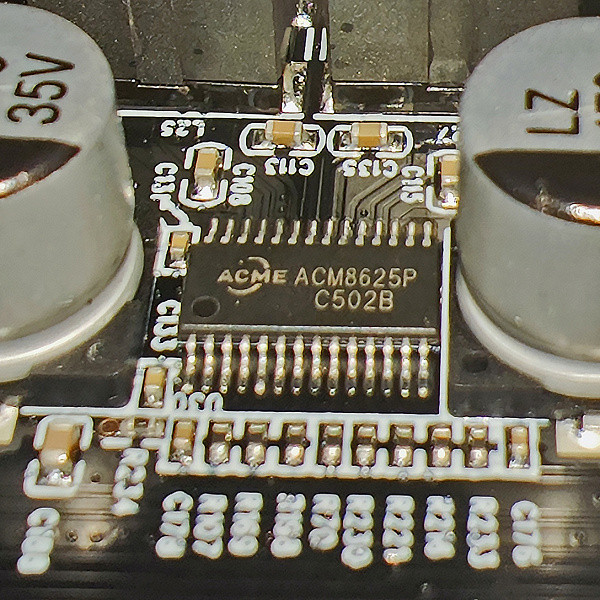
The largest board, containing the main components of the soundbar, is fixed to the back wall of the device. All parts are connected by cables that can be disconnected if necessary. The cables are protected by a thin layer of sound-insulating material.

The “premium HD audio processor” Airlyra Sunplus SPA300, manufactured by Taiwanese Sunplus Technology, is responsible for decoding all available formats, operating digital inputs and processing sound.
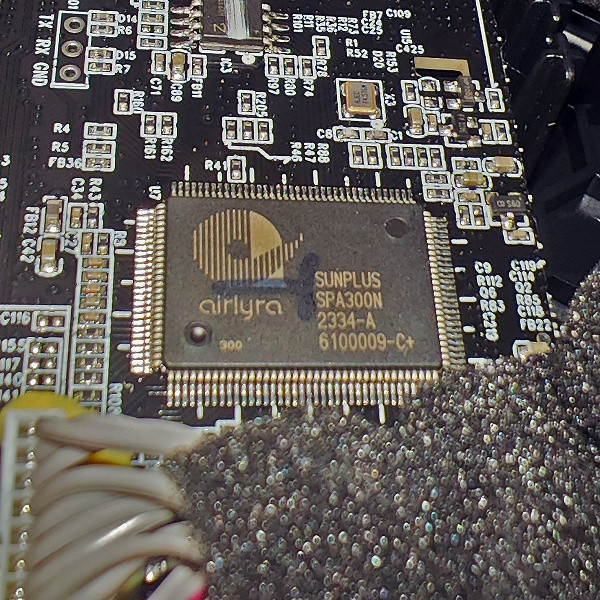
The Bluetooth module is hidden under a sticker, under which is the ATS2835P chip from Taiwanese company Brito Technology. According to the datasheet, this chip supports Bluetooth 5.0 for the soundbar.
The Flexus Sub 100 subwoofer is a «closed box» design with no damping materials inside. A 10-inch long-stroke speaker is responsible for the sound. The inside of the case does not look particularly attractive, but reliability is more important in this case.
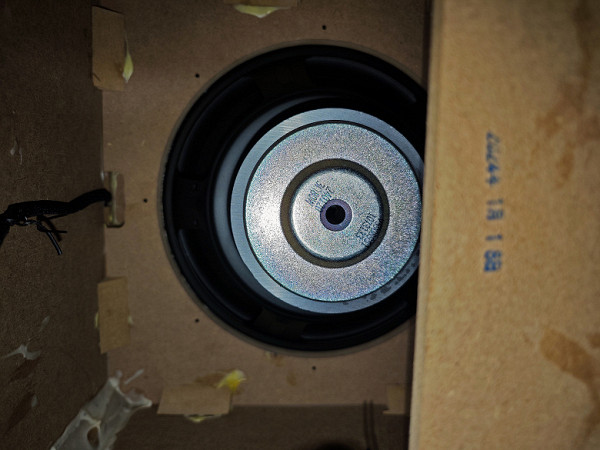
The power supply is again on a separate board, the manufacturer is the same. It is slightly raised above the amplifier board with the help of metal inserts under the mount.
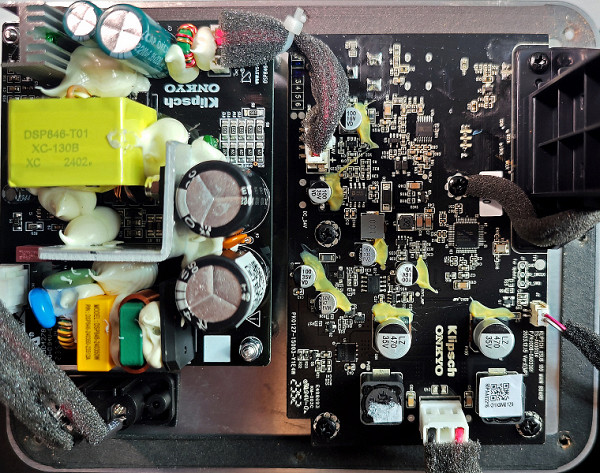
The subwoofer is powered by the widely used BP1048B2 audio processor with Bluetooth, which is often found in budget devices. Its capabilities are quite sufficient for a subwoofer. It also uses its own HT91808 ADC from Shenzhen Yongfukang Technology, which probably provides operation with an analog input.
For wireless communication with the head unit, a separate module is used, built on a certain ETK28, the datasheet for which could not be found.
Connection and operation
The Klipsch Flexus Core 200 soundbar is an impressive 112 cm wide, making it ideal for TVs with a diagonal of 50 inches or more. It weighs 8.5 kg, so it is recommended to place it on a stable horizontal surface or use the included brackets. All connection ports are located on the rear panel.

The Klipsch Flexus Core 200 soundbar features HDMI eArc, which lets you receive audio from your TV and control all the devices in the system. However, there are no other HDMI ports for connecting external devices, so you will have to connect game consoles, media players, etc. through the TV, given its passthrough audio capabilities. If you need a direct connection, you can use the optical digital input.
Connection is easy: connect the TV via HDMI, add a media player to the TV, and use its remote to control the entire system. Bluetooth is also available for quickly streaming music from a smartphone or listening to podcasts.
The soundbar supports all the declared audio formats, including PCM and Dolby Atmos, but does not support DTS, which is becoming the norm, since this format is rarely used in modern video files and streaming platforms. For those who collect video files with DTS, the chance of being left without sound is extremely small, since such tracks are often duplicated in Dolby Digital.
The analog RCA output allows you to connect not only the «native» subwoofer to the soundbar, but also others, although the built-in crossover is not activated, so the subwoofer must have its own crossover with adjustable cutoff frequency. The USB-C port allows you to connect an external drive with audio files, although the built-in player only supports MP3, WAV and AIFF and is controlled only through a smartphone app, since neither track names nor their numbers are displayed on the screen. Bluetooth is used to transfer audio content from mobile devices. After activating the Bluetooth connection, the Klipsch Flexus Core 200 first tries to connect to previously paired devices. If the attempt fails, it goes into pairing mode, after which you can find it in the smartphone menu and connect.
The full list of supported codecs and their modes was obtained using the Bluetooth Tweaker utility. Two main codecs are supported: the basic SBC and the more «advanced» AAC.
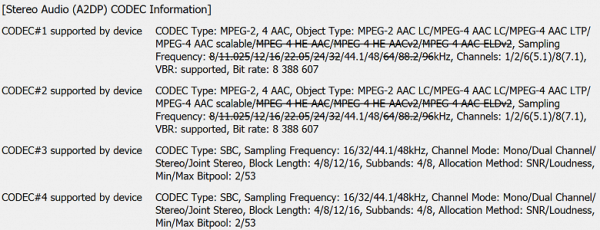
The upper limit of the AAC bitrate is set at a very high level, which is determined by the connected source device. The standard value of 256 kbps is usually used. The maximum Bitpool parameter for the SBC codec is 53, although the recommended High Quality profile implies a value of 51, which allows SBC to work at its maximum capabilities.
The soundbar does not support Wi-Fi, so there are no features such as Apple AirPlay, Chromecast, Spotify Connect, direct access to streaming services and integration into the smart home, multi-room or voice assistants. This can be a bit annoying, but many users do not use such features. The Klipsch Flexus system is focused on simple connection to the TV and occasional streaming of audio from a smartphone.
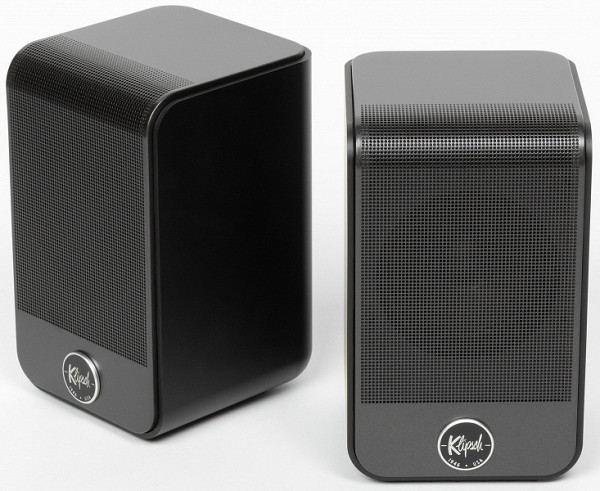
Klipsch Flexus Surr 100
Connecting additional devices is as simple as possible. The rear speakers and subwoofer come with a wireless adapter that needs to be inserted into the USB-A port on the right side of the back panel of the soundbar. There is only one adapter, and it is used to connect both the subwoofer and the rear speakers, which leaves one spare if you are assembling a full setup. You can also connect up to two subwoofers for the most dedicated lovers of deep bass.
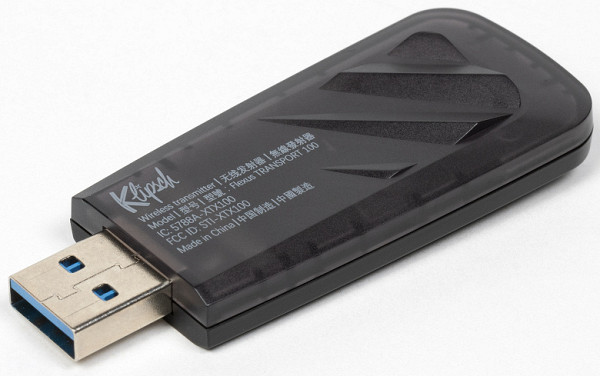
Each device will require its own power supply, so you need to ensure that there is a power outlet nearby. Once connected, all devices automatically find each other. If this does not happen, you need to press the pairing buttons on the soundbar (next to the USB port for the adapter) and on the device you are connecting. The whole process takes literally a couple of minutes.
On the back panel of the subwoofer there is a switch for selecting the operating mode: independent or in pairs. There is also a pairing button, a USB port (for service purposes only), an RCA connector for analog connection and a connector for the power cable in the lower right corner.

Management and software
There are several ways to control the soundbar. Most users will probably use the remote control for their TV or media player. However, the Klipsch Flexus Core 200 also comes with its own remote. It allows you to adjust basic settings: volume, active input, sound profile, and screen brightness of the soundbar. There are also options for changing the volume balance of the speakers and some tone control settings. The remote is comfortable in the hand, the buttons are soft with a clear click, and the volume buttons are conveniently placed on the “ring” at the top.

The touch keys on the top panel of the soundbar accurately register touches and work without errors, although with a slight delay. The panel allows you to perform only basic functions: turning on the device, changing the active output and adjusting the volume.
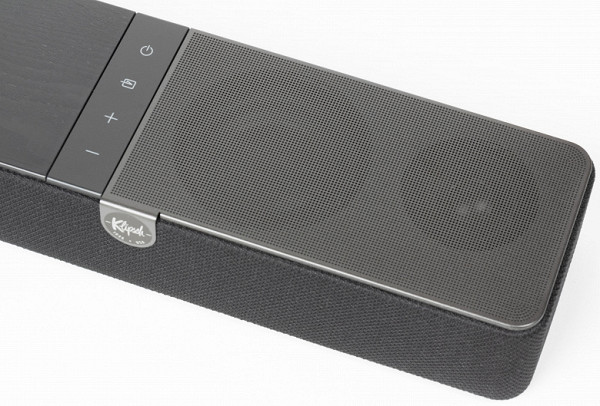
For all other settings, the Klipsch Connect Plus App is provided. Since the soundbar does not support Wi-Fi, the connection to the app is via Bluetooth, which may cause a slight delay in changing the settings. However, this is not critical. After installation, the app offers a short guide in which you can immediately configure the basic parameters.
The soundbar will automatically recognize already connected Flexus series devices, and will prompt you to add unconnected ones. This can be done at any time, as the settings remain active. The soundbar can be renamed in the app or left with the default name.
In the center of the main screen is a playback control module that allows you to pause tracks and skip them in both directions. The volume control is located at the very bottom of the screen, which can be inconvenient — it is difficult to reach it with one hand while holding a smartphone. The built-in equalizer offers several presets and three bands for manual sound adjustment. Although three bands are not many, they are still present, which is a positive point.
The dialog selection option has three modes of operation — from minimum to maximum, which are switched in turn by clicking on the microphone icon, which changes its appearance depending on the selected mode. Next to it is the night mode button.
Switching between active inputs is placed on a separate page, which is justified, since they would take up too much space on the main page. The main three inputs are easily activated with a single touch from the remote control, while the USB input, which is used less often, does not take up much space on the page.
All settings are accessible both from the main screen and through the main menu, where you can check for updates, change the name and perform other actions. There are almost no complaints about the quality of the interface translation into Russian, but one typo was still found.
What is especially nice is that answers to frequently asked questions are available entirely in Russian, and even instructions can be downloaded as a PDF file.
The volume of each device in the system can be adjusted separately, which allows it to be adapted to the characteristics of the room and the location of the listeners. The lack of a measuring microphone and an auto-tuning system is a bit disappointing — we will talk about this later. Two additional sound modes are also available in the general menu: «movie» and «music».
Volume settings can also be changed on each device's page, which is convenient but can be a bit confusing if you're not used to it. Separate tabs provide options for adjusting the display brightness and viewing device information.
Sound and frequency response measurements
The Klipsch Flexus soundbar certainly can't match a full-fledged Dolby Atmos system in terms of surround sound. However, multi-channel tracks are reproduced impressively, and sounds are positioned quite accurately: phrases or shots from the side of the viewer, as well as the flights and drives of equipment, are perceived correctly. We usually see this quality in much more expensive soundbars. It is especially worth noting how the soundbar imitates sound coming from above when playing Dolby Atmos tracks. This allows you to feel the size of the sound source, although modern films often rely on ceiling speakers to create effects.
Traditionally, all soundbars, even the most expensive ones, do not cope well with sounds coming from behind. Advanced models try to fix this with the help of reflected sound and an auto-tuning system, but this is a complex and expensive process. The Klipsch Flexus takes the easy, reliable route by adding small rear speakers to the mix, essentially making the system a full 5.1 setup with the added benefit of a soundbar to enhance the sound.
The rear speakers are small and connect wirelessly to the center unit, requiring only a nearby power outlet. While their sound quality isn't exactly terrific, the 3-inch full-range drivers are capable of handling phrases, door slams, engine noises, and other sounds placed behind the listener.
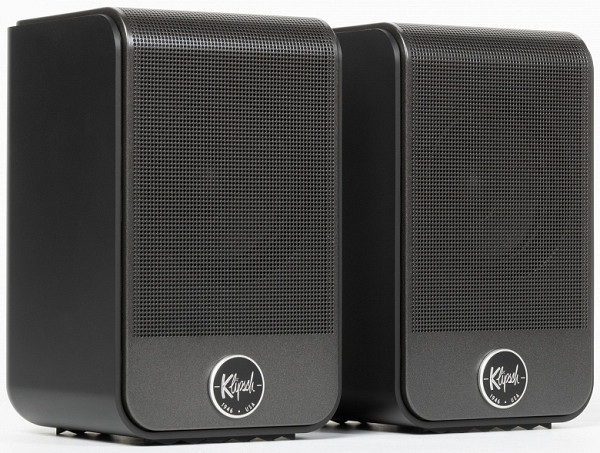
Probably, the automatic sound adjustment system for the room would significantly improve the surround sound, but the Klipsch Flexus Core 200 does not have it. Therefore, you will have to manually adjust the volume of all channels through the application, using test content or familiar films. This will take time for experiments, but the result can be quite satisfactory — the main thing is that the sound is comfortable and interesting for listeners. The Klipsch Flexus Core 200 has many settings, and it is not possible to consider them all, so we will focus on the main ones.
The frequency response of the soundbar itself shows that it has a deep and pronounced bass. Although it will not «beat you in the chest» and shake the room, there is no lack of low frequencies here. The midrange frequencies are presented without obvious defects and with acceptable detail, despite some irregularities. High frequencies are slightly forced, which improves the subjective perception of sound quality, but does not lead to the appearance of «sand» — such a setting for soundbars is quite justified.

While the bass quality isn't exceptional and there's some distortion at high volumes due to cabinet resonances, the Klipsch Flexus Core 200 still delivers impressive sound. If you're looking for impactful booms and deep bass, you might want to consider a subwoofer. However, without one, the Klipsch Flexus Core 200 is still one of the best soundbars we've heard.
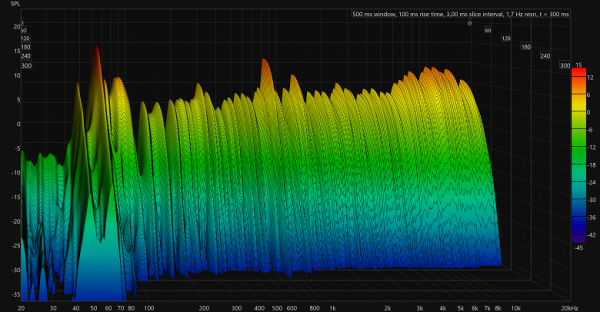
Switching between Music and Movie modes has little effect on the tonal balance. These modes likely adjust channel volume levels and sound delay to create a surround sound effect. Music mode emphasizes stereo sound and the expansion of the «virtual stage,» while Movie mode emphasizes the perception of sound effects moving around the listener.
Dialogue mode also has little effect on the frequency response. It likely increases the volume of the center channel, where dialogue is usually located, a little, and perhaps emphasizes the mids in this channel a little. This has little effect on the overall tonal balance, but makes conversations more intelligible.
Night mode lowers the volume, reduces bass and cuts the high-frequency range. It is not suitable for watching movies with intense special effects, but it is ideal for quietly watching a TV series before going to bed without disturbing others.

The EQ presets do what you'd expect based on their name: Vocal accentuates the mids, Bass boosts the lows, Treble brings out the highs. Preset Rock boosts the edges of the range, which, oddly enough, is considered suitable for rock music by many producers.
Adding a Klipsch Flexus Sub 100 subwoofer to the system significantly improves the sound. A full-fledged deep bass appears, unnecessary accentuation disappears, and the low-frequency range becomes more dense and collected. The sound becomes more pleasant, even for those who are not fans of deep bass. The effects in films become even more impressive, and the music gets that very «punch» that is especially appreciated by fans of electronic music and hip-hop.
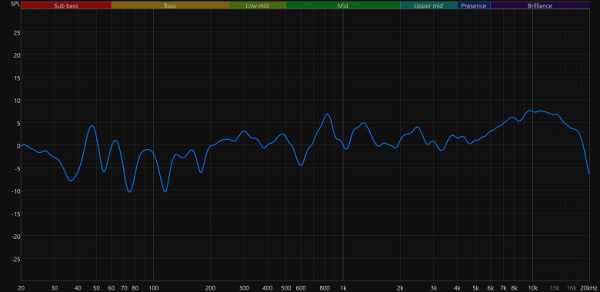
If the emphasis on the low frequencies seems too strong, you can reduce the volume of the subwoofer to make the bass less pronounced. Or, conversely, you can boost the bass to the desired level while maintaining its quality.

All the equalizer presets fit perfectly into the «extended» system and work the same way as we saw above.
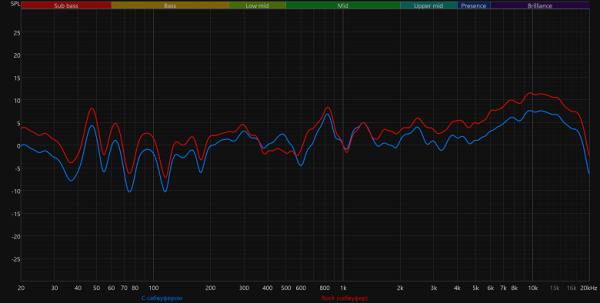
The bass becomes deeper and richer, even if emphasis on low frequencies is not required. The quality of its reproduction is noticeably improved, so the presence of a subwoofer is justified, even if emphasis on low frequencies is not planned.
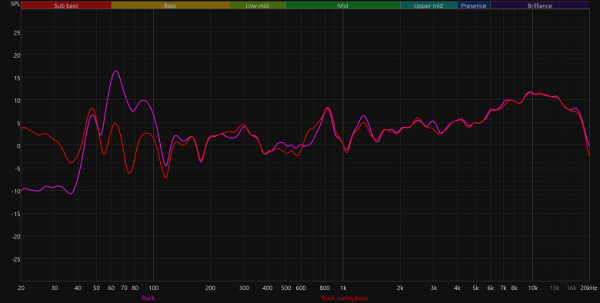
The Klipsch Flexus Sub 100 can be connected via an analog input using a cable. When connected this way, the sub-bass suddenly becomes less pronounced, probably because its level is further increased by the DSP in the soundbar. It is also worth noting that the subwoofer does not have a built-in crossover, so one must be provided in the source.

The subwoofer is made in the format of a «closed box», but due to resonances inside the case it still «buzzes» noticeably. However, the peaks on the «waterfall» in this case look relatively modest.
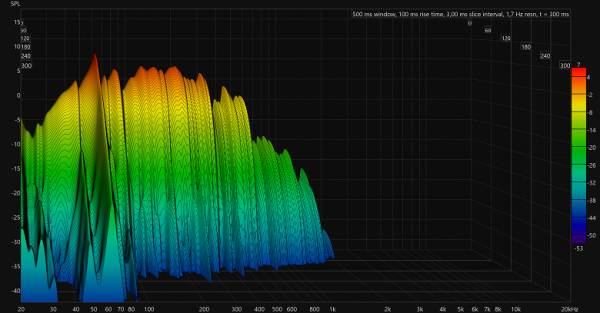
Results
The main advantage of the Klipsch Flexus Core 200 soundbar, especially when paired with a subwoofer and rear speakers from the same line, is its outstanding sound quality. Although it cannot completely replace a stereo system for music or a full-fledged home theater system, the Flexus Core 200 demonstrates excellent results in creating surround sound and is clearly one of the best in its class. At the same time, it is significantly cheaper than many other soundbars with comparable sound.
At the time of testing, a set including the “advanced” version of the soundbar, one subwoofer and rear Klipsch Flexus speakers cost about 135 thousand rubles. For this money, you can buy a stereo system, but assembling a full-fledged Dolby Atmos acoustic system will be more difficult. The Klipsch Flexus system is easy to install and connect, providing impressive surround sound. You can start with one soundbar, and then add a subwoofer or rear speakers.
Despite its advantages, the system has some compromises, the main one being the lack of a Wi-Fi module. This results in the lack of support for Apple AirPlay and Chromecast, integration into a smart home and other convenient features. However, these are more features of the device than disadvantages. Klipsch Flexus is focused on providing high-quality surround sound in a simple and affordable way, without unnecessary cables and complex settings. This is a solution for those who want to improve the sound in their home theater without spending a lot of time and effort on it.

